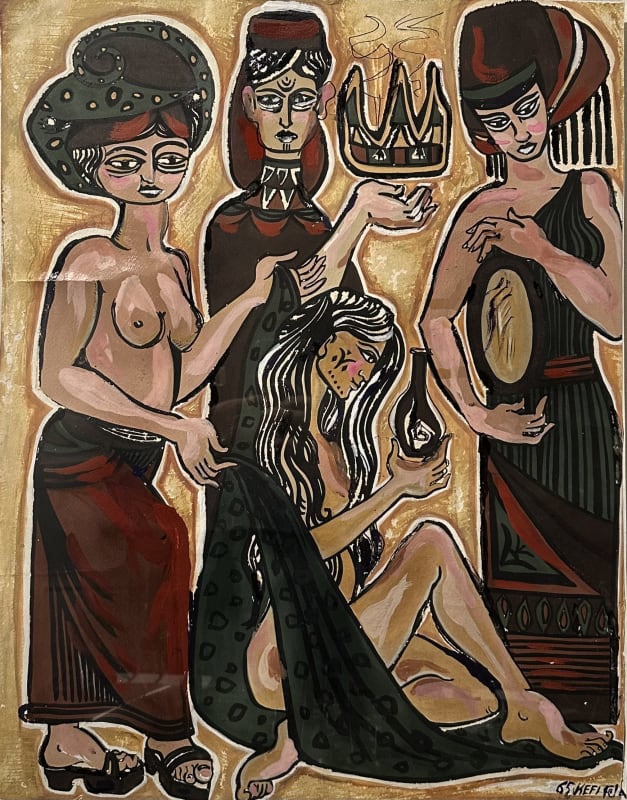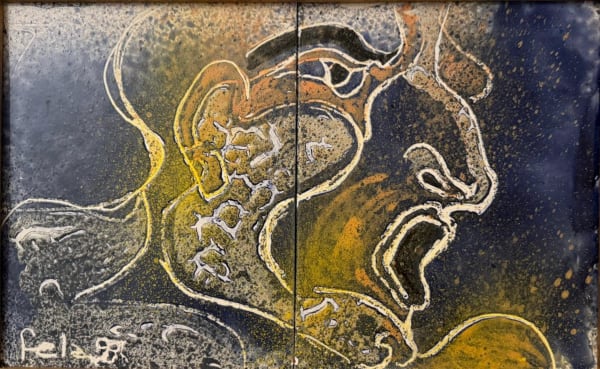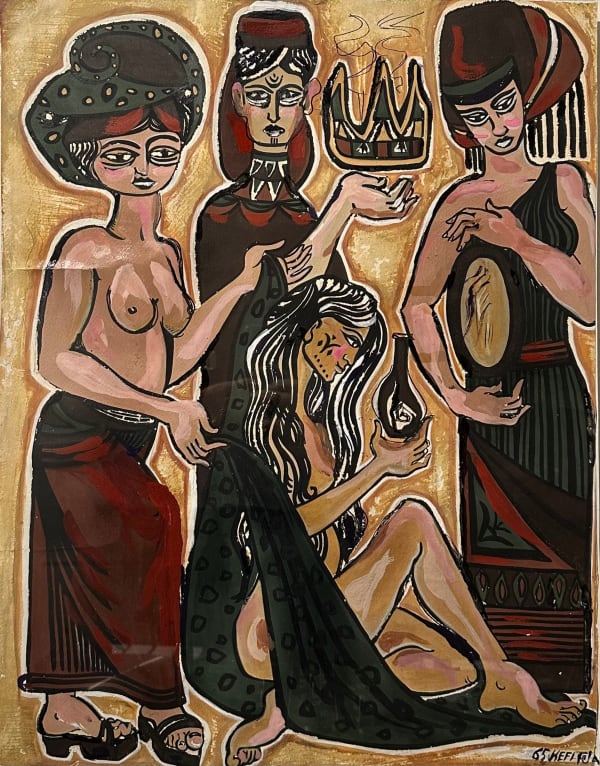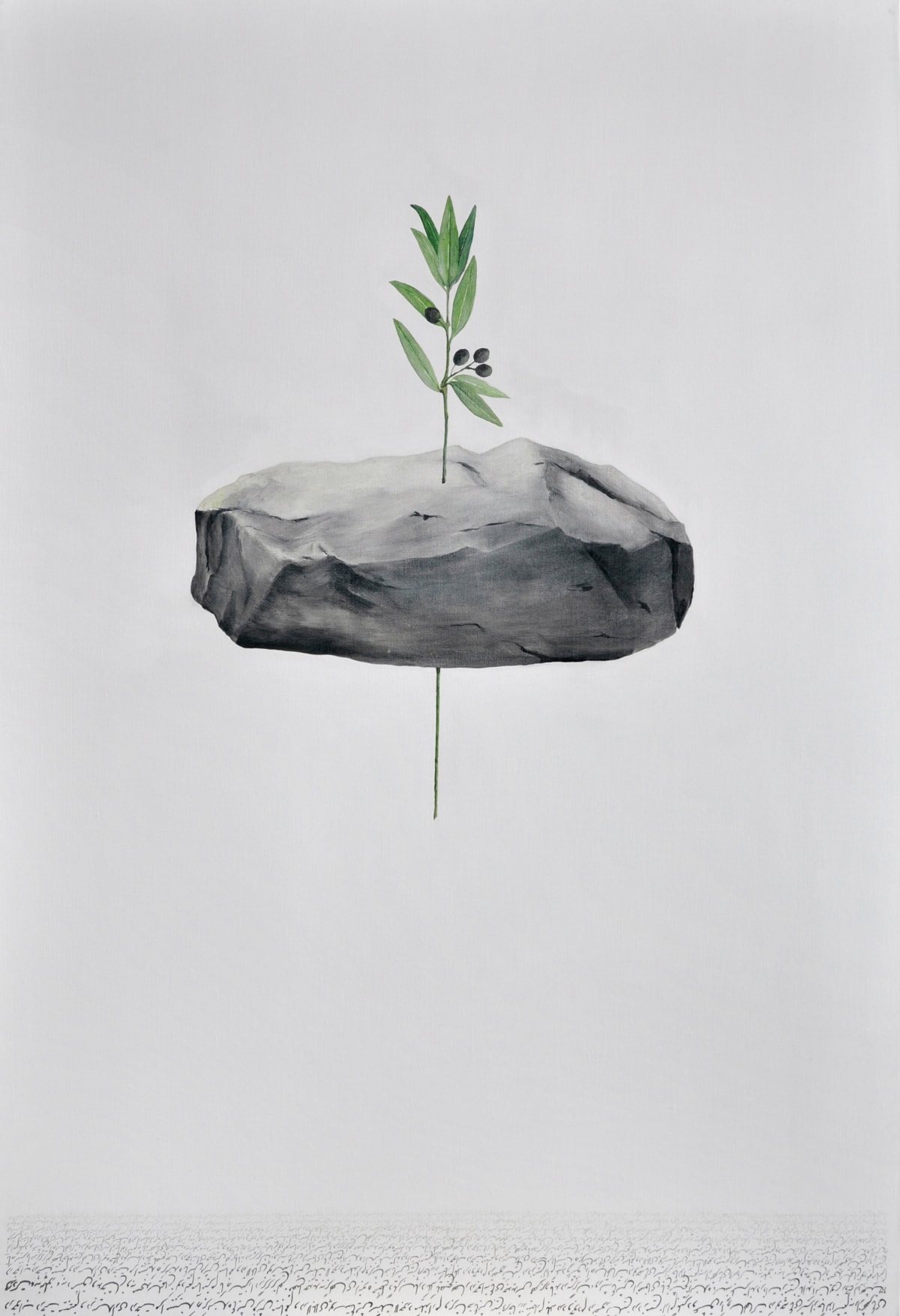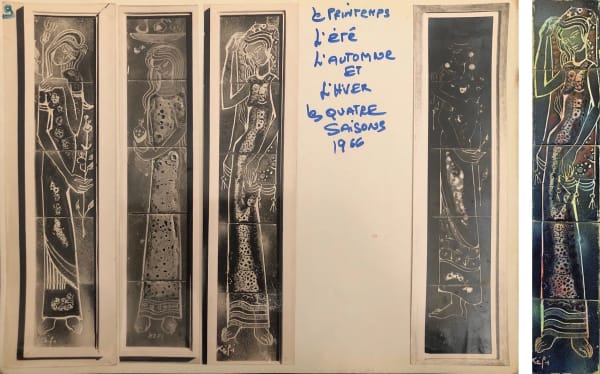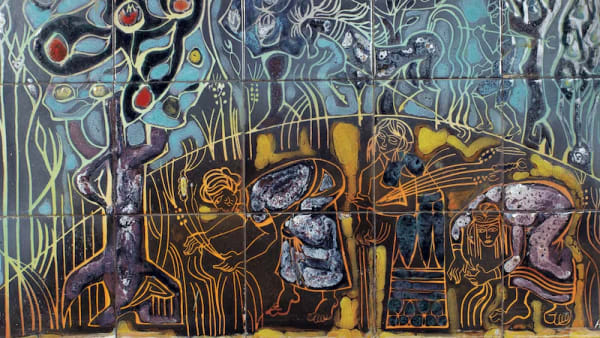Fêla Kefi Leroux Carthage
Biography
Fêla Kefi-Leroux is a Franco-Tunisian artist born in Carthage, Tunisia, who currently lives and works between Paris and Tunis. She graduated with highest honors from the Decorative Arts section of the École des Beaux-Arts in Tunis and was awarded the Excellence Prize by Tunisian President Habib Bourguiba himself. She studied under major figures of modern Tunisian art such as Safia Farhat, Mahmoud Shili, and Abdelaziz Gorgi.
She also graduated from the École Nationale Supérieure des Arts Décoratifs in Paris, specializing in Mural Arts and Interior Architecture, and was a resident at the Cité Internationale des Arts in Paris from 1966 to 1970. Fêla Kefi-Leroux participated in the exhibition “Tendances et Confrontations” during the First World Festival of Black Arts in Dakar in 1966.
Recognized internationally, Fela Kefi Leroux was one of the first Tunisian women artists to participate in the First World Festival of Black Arts in Dakar in 1966 (as highlighted in Embracing Blackness at the First World Festival of Black Arts, an article by Beya Othmani), under the patronage of President Léopold Sédar Senghor.
Since the 1970s, she has also maintained a regular practice of drawing at the Grande Chaumière studios in Paris. Fêla Kefi-Leroux is a painter and ceramist who has built her artistic path between the prestigious halls of the École des Beaux-Arts in Tunis and the École Nationale Supérieure des Arts Décoratifs in Paris. She developed a unique pictorial approach, at the crossroads of innovation and a deep anchorage in her Tunisian cultural heritage.
Trained by major figures such as Safia Farhat, Pierre Gautier de Laye, and Abdelaziz Gorgi, Fêla Kefi-Leroux refined her practice and technical mastery, notably at Madame Brunau’s studio at the Cité Internationale des Arts in 1968, as well as with Mercier Frères under the direction of André Mercier. This experience as an interior decorator profoundly reinforced her commitment to decorative arts.
Her practice, nourished by her time at the Académie de la Grande Chaumière in Paris, expresses itself through a deeply humanist artistic style. Her portraits and nudes, marked by delicacy, reveal a sensitive exploration of the human condition. Her subtle use of light and shadow, combined with meticulous attention to detail, imbues her works with an emotional charge that transcends mere representation.
Her works have since been exhibited at the Wallach Art Gallery at Columbia University and featured at the Museum of Modern Art (MoMA) in New York. They are included in several public and private collections, including the Barjeel Art Foundation.
Works
Exhibitions
Press
-

Fela Kefi Leroux, Embracing Blackness at the First World Festival of Black Arts
Beya Othmani, HYPERALLERGIC, March 6, 2023 -

Saudi exhibition brings craft-rooted practices of women Arab artists
Horizon in their Hands is a collaboration between Ithra museum in Dhahran and Sharjah's Barjeel Art FoundationRazmig Bedirian, The National, September 19, 2025

